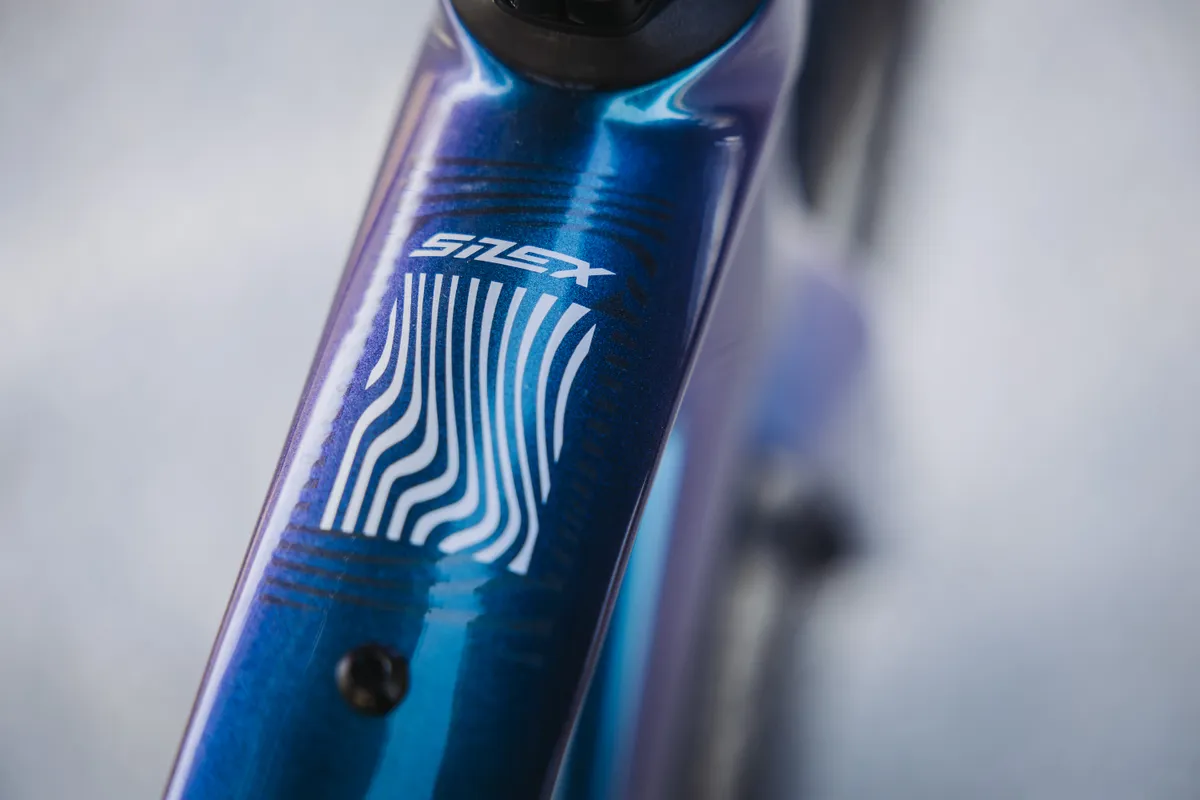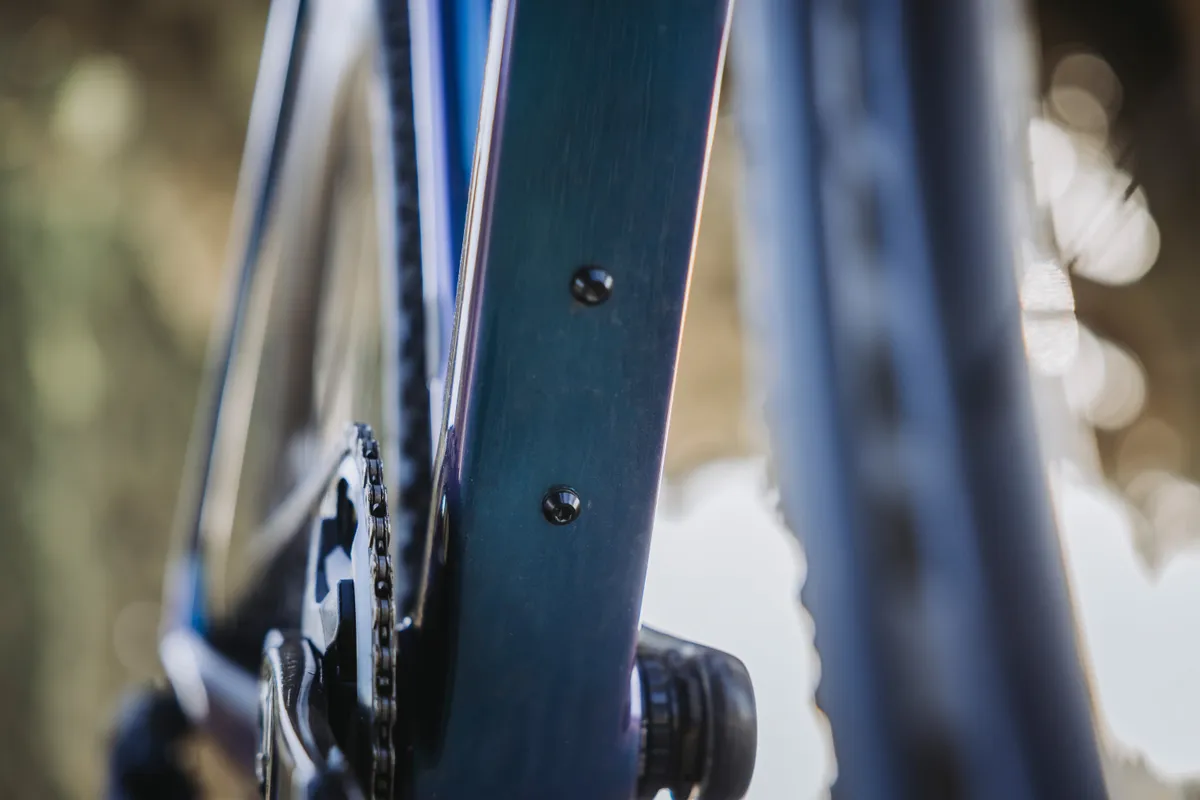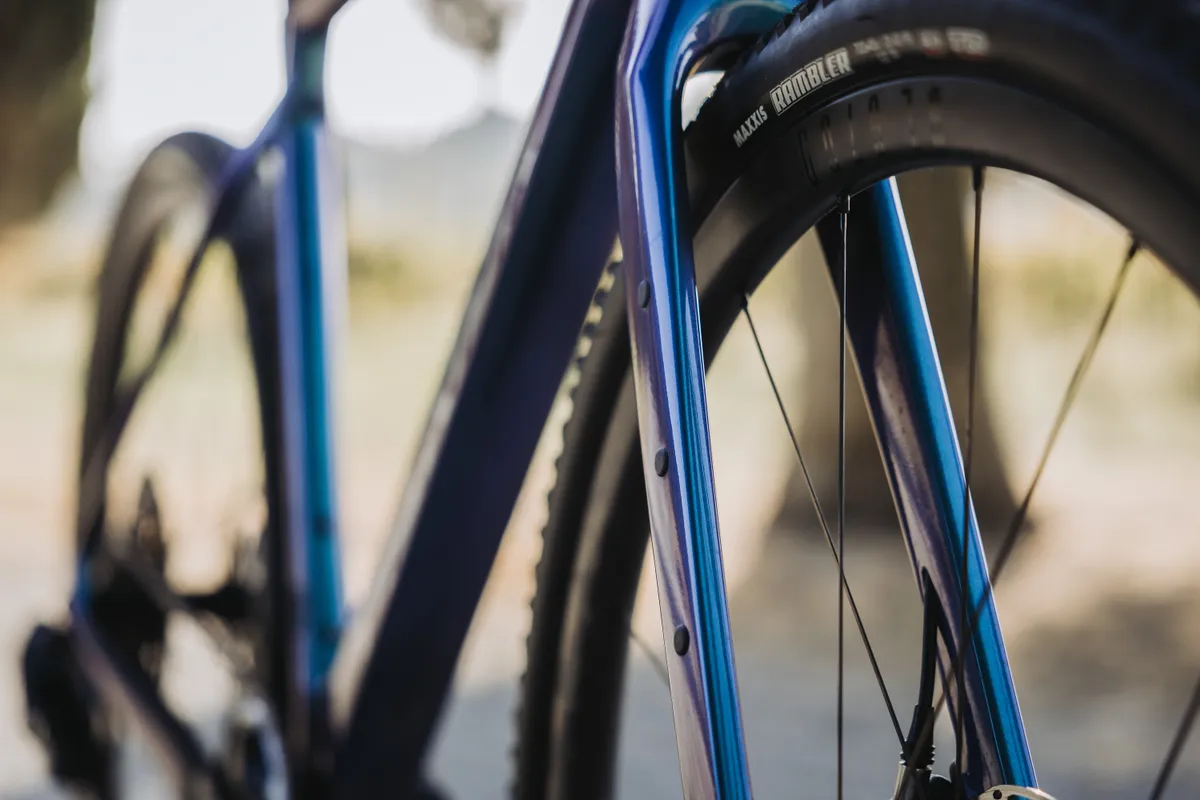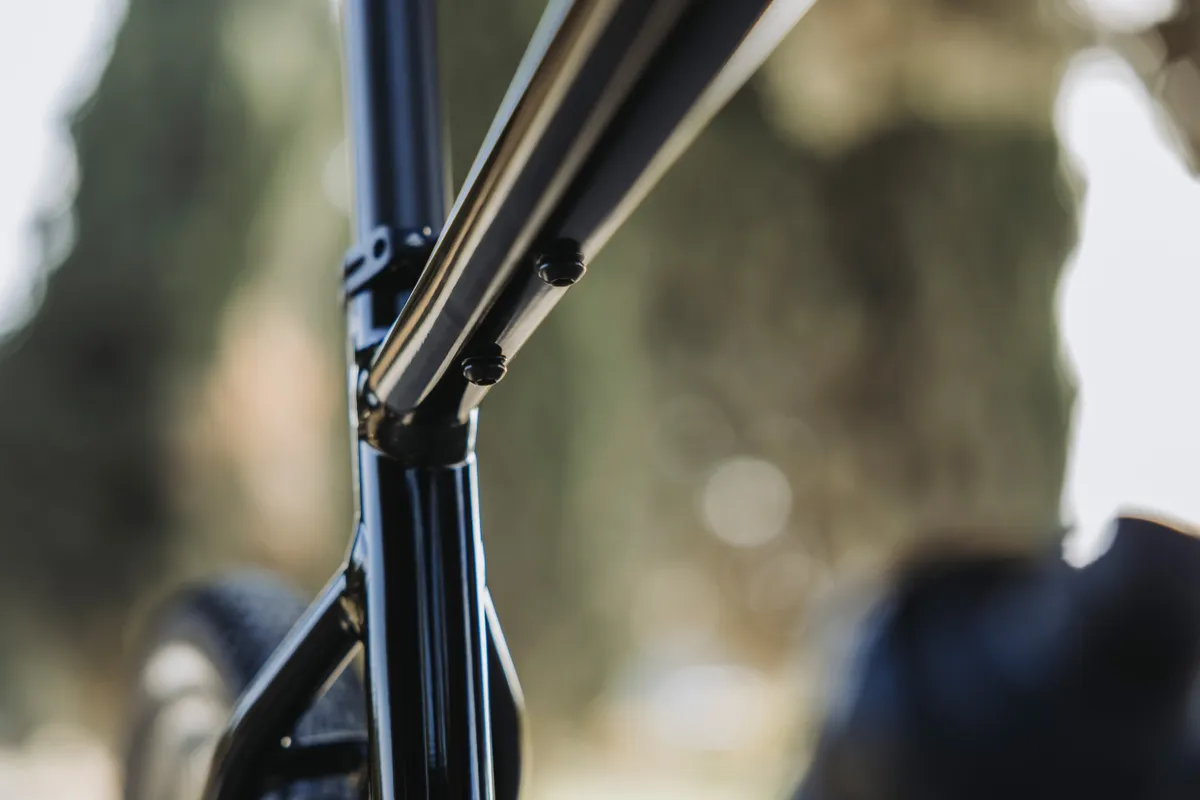Merida has lifted the lid on the new Silex – the bike ridden to victory in the men’s UCI Gravel World Championships by Matej Mohorič – claiming greater off-road capability thanks to a revised geometry and increased tyre clearance.
Despite Mohorič’s solo victory, Merida says the Silex isn’t designed specifically as a gravel race bike. Clearly, with a three-time Tour de France stage winner aboard, it’s a bike that can more than mix it with racier rivals, though.
What’s changed? In short, the head angle is now 1.5 degrees slacker, tyre clearance has increased from 40mm to 45mm, cables now run internally and there are more mounting points.
The frame, available in carbon fibre and aluminium versions, has had a visual refresh, too, while Merida has specced 180mm rotors on all models for serious braking power.
Six models make up the range for now. Prices start from £1,275 for the Shimano Sora-equipped Merida Silex 200, and rise to £8,750 for the SRAM Red eTap AXS mullet Merida Silex 10k.
Five things you need to know about the new Merida Silex
- Mountain-bike inspired geometry with 69.5-degree head angle (1.5 degrees slacker than outgoing Silex)
- Maximum official tyre clearance has grown from 40mm to 45mm on 700c wheels (42mm with mudguards)
- Two frame options – Silex CF (carbon fibre, 1,220g) and Silex Lite (aluminium, 1,900g) – and a shared carbon fork (540g)
- New frame has top tube mounts, additional fork mounts and mudguard eyelets, and also offers dropper and suspension fork compatibility
- Six models in the range – three aluminium, three carbon – from £1,275 to £8,750
Wait, it’s not a gravel race bike?

Merida introduced the original Silex in 2017, back when gravel riding was still a relative twinkle in the eye of bike designers and brand marketeers.
While gravel has evolved since then, and with it the new Silex, the refreshed bike’s purpose remains pretty much the same.

Merida says it's designed first and foremost as an off-road bike, but with versatility front of mind, too.
Indeed, while Merida now has the Scultura Endurace GR, that is effectively an endurance road bike with 35mm tyre clearance, and not a dedicated gravel bike.
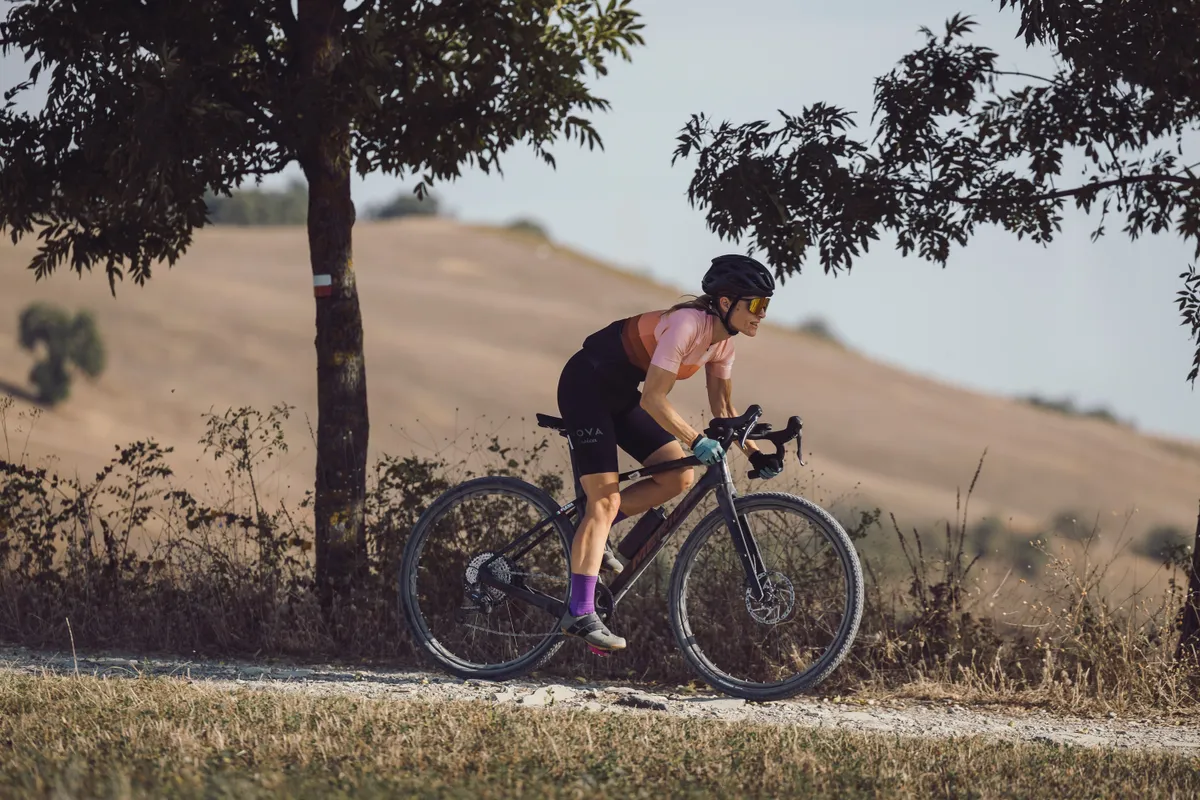
As a result, the Silex isn’t a bike designed to offer specificity in any one gravel niche, be it mountain-bike style bikepacking capabilities, or aero race credentials, like the new Canyon Grail.
Merida says it can do a bit of everything, so while the geometry flirts with the latest mountain bike trends, Merida says it’s capable for commuting and winter riding, too.
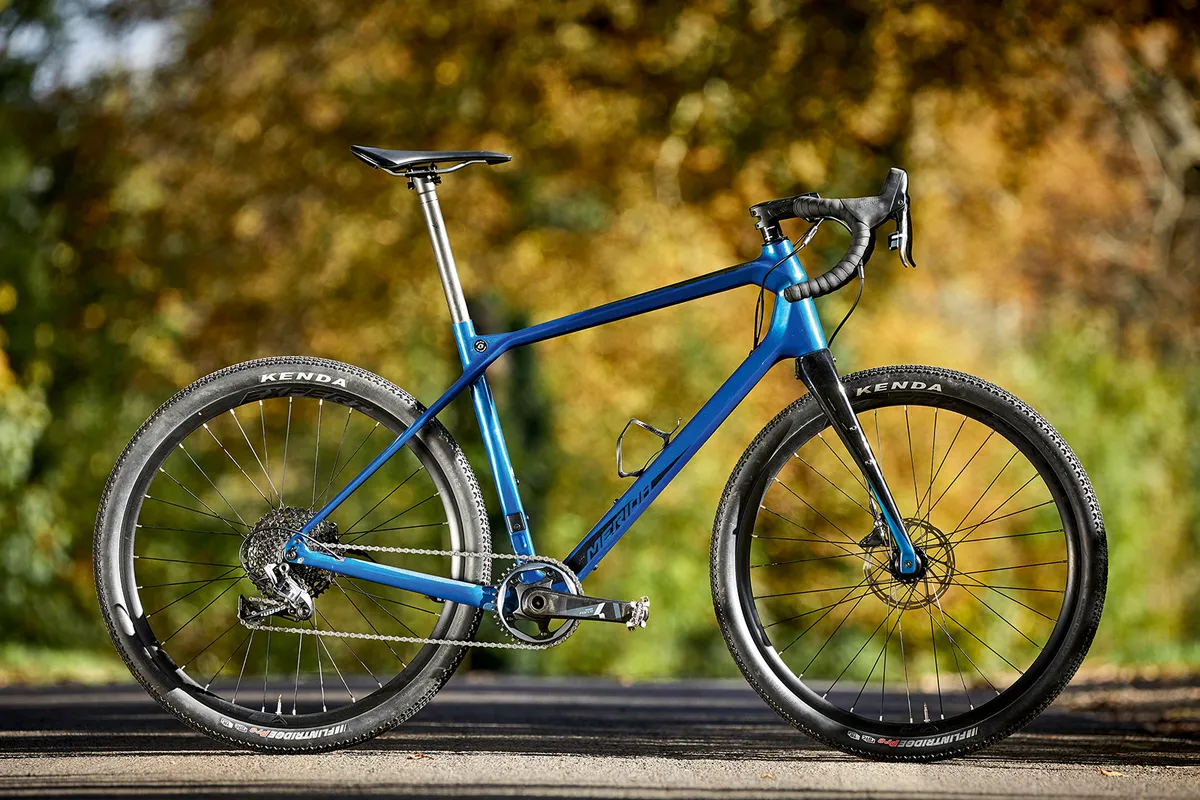
It’s this versatility that has been at the heart of the Silex’s “runaway success”, according to Merida.
A Merida representative told BikeRadar at the launch that the original Silex was a fairly hard sell to the Taiwanese brand’s HQ, but since that launch, it’s become one of the firm’s most important bikes.
Aluminium and carbon frames
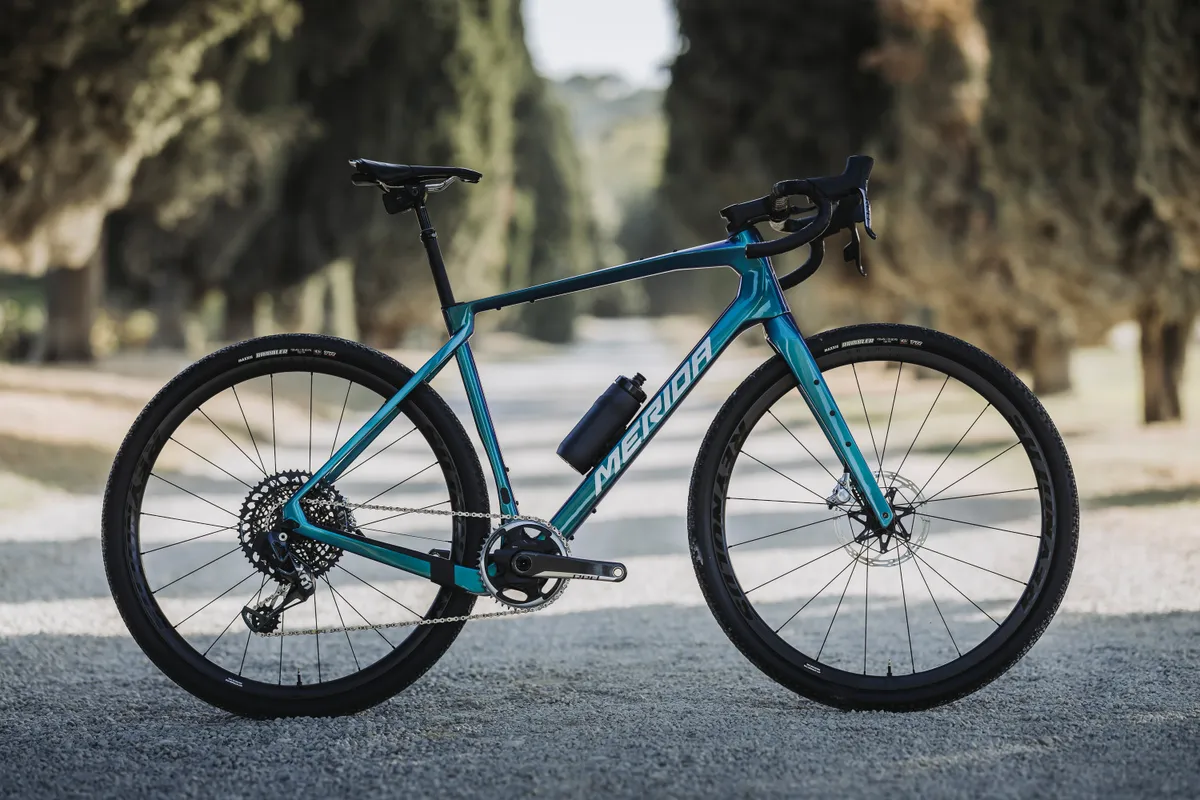
Before we get into features, let’s start with frame materials.
The aluminium-framed Silex Lite weighs a claimed 1,900g, while the carbon fibre Silex CF comes in at a claimed 1,220g. Weights are for a size-medium frame, painted but without any small parts.
Merida has kept things simple here, with just one carbon frame – unlike some brands that offer different carbon tiers. Both the alloy and carbon frames come with the same 540g (claimed weight) carbon fork.

Visually, the two frames share broadly the same look – notably the dropped seatstays. However, the aluminium frame has an external seatpost clamp, and the carbon frame has an internal wedge-style clamp.
While we’re talking looks, Merida now jokingly describes the old Silex as something of an “ugly duckling” with “challenging looks”.
The new frames look altogether more modern, and broadly in line with market trends, though the carbon frame in particular still has some distinctive styling around the seatstay junction.
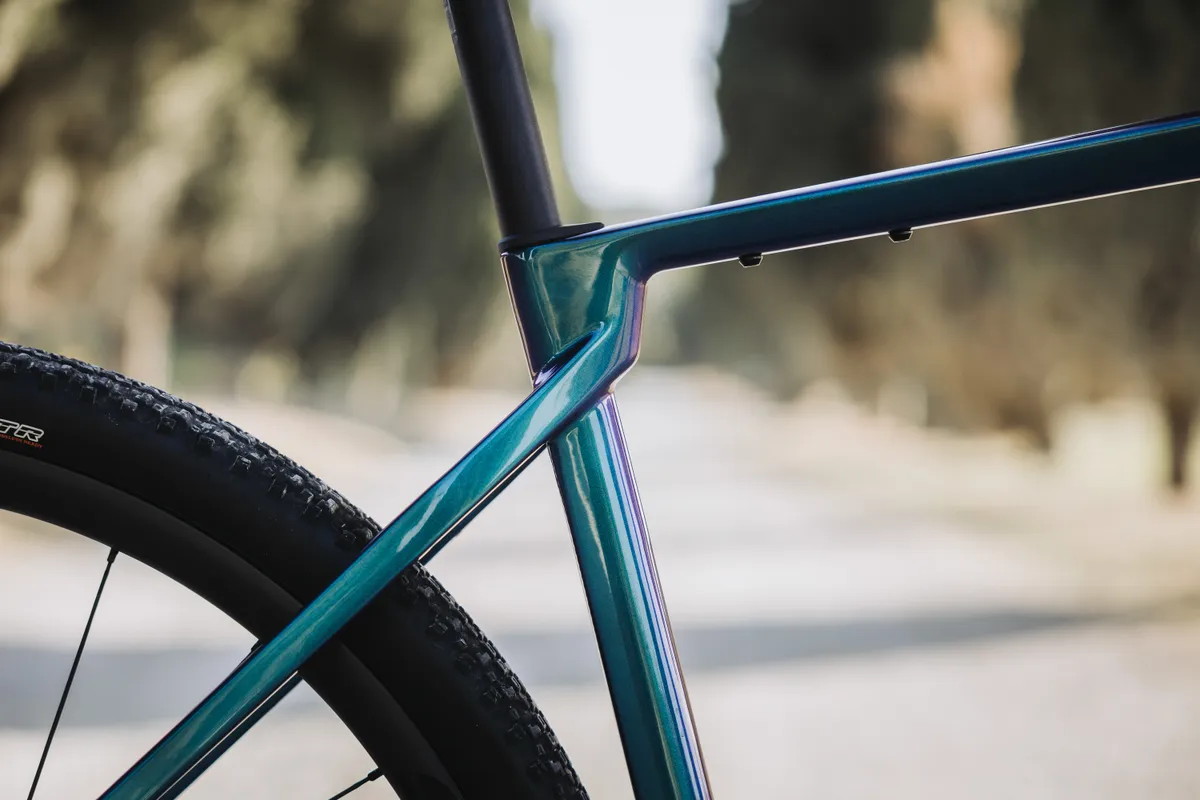
On that note, when we ran our original story on Mohorič's worlds-winning bike, we speculated that the oversized seatstay junction could be designed to improve comfort. However, while the dropped stays and 27.2mm seatpost may help in that department, the junction itself is largely an aesthetic design choice.
Otherwise, one notable difference between the two frames is the ability to mount a rack on the aluminium frame. That’s not possible on the carbon frame, but does mark the alloy chassis out as a commuter-cum-gravel bike.
Both the carbon and aluminium frames can accommodate full-length mudguards, while now also offering top-tube mounts, mounts on the underside of the down tube, and an additional ‘anything cage’ mount on the fork (increasing the number to three on each leg).
Mountain-bike inspired geometry

The original Silex took some of its geometry cues from Merida’s mountain bikes and that continues here, following the trend in the off-road world for making things slacker, by dropping the head angle from 71 degrees to 69.5 degrees.
This, according to Merida, improves stability at speed on rough terrain or when fully loaded with touring or bikepacking gear.

Otherwise, it’s much of the same – “if it ain’t broke, don’t fix it”, in Merida’s words – with the intention being to modernise and evolve the old bike’s “balanced and refined geometry”, rather than overhaul it.
The position remains fairly relaxed but, going back to the Silex’s visual makeover, the head tube has been shortened to give the bike a more aggressive look. This has been compensated by using a longer fork.
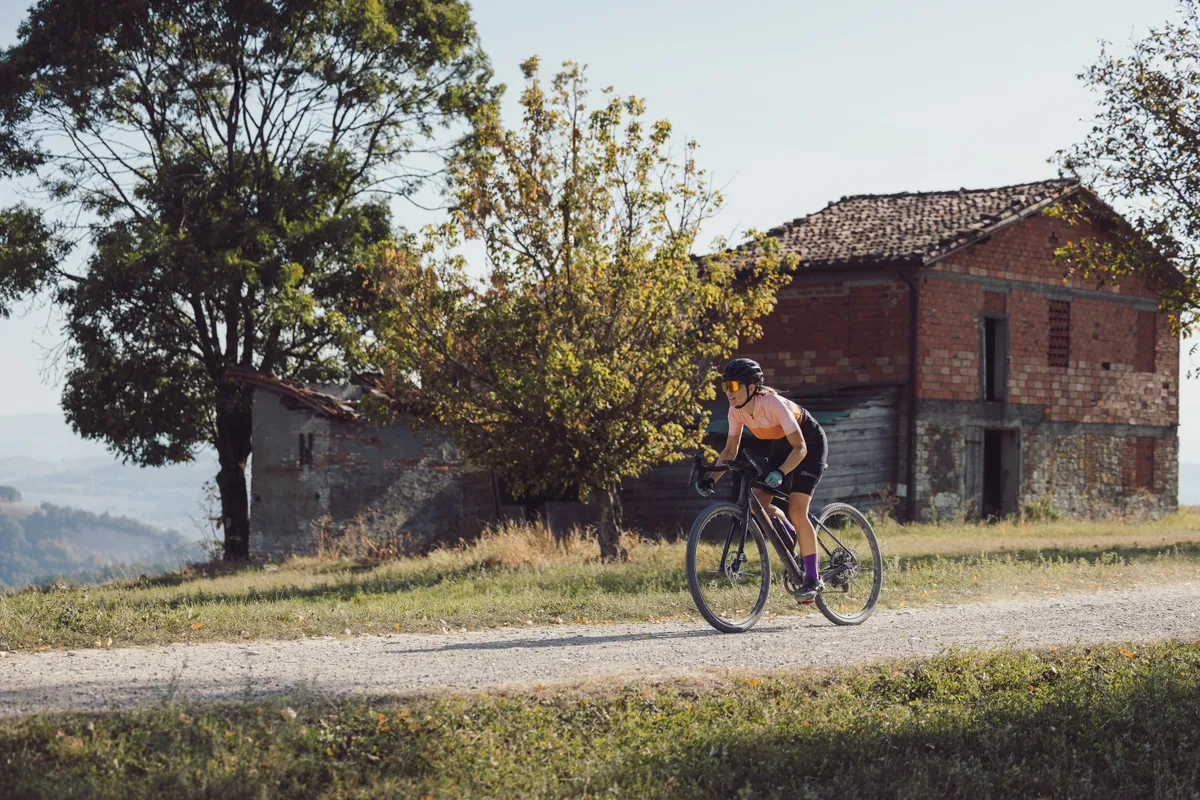
That, Merida says, also ensures the new frame is compatible with a gravel suspension fork without impacting the geometry.
There are no suspension-equipped models in the range, though – Merida reckons the Silex’s geometry and tyre clearance cover the handling characteristics and comfort needed by the majority of riders.
| XS | S | M | L | XL | |
|---|---|---|---|---|---|
| Seat tube (mm) | 440 | 470 | 500 | 530 | 560 |
| Seatpost insert length (mm) | 170 | 200 | 230 | 260 | 290 |
| Top tube horizontal (mm) | 550 | 565 | 580 | 600 | 620 |
| Chainstays (mm) | 430 | 430 | 430 | 430 | 430 |
| Head tube angle (degrees) | 69.5 | 69.5 | 69.5 | 69.5 | 69.5 |
| Seat tube angle (degrees) | 74.5 | 74.5 | 74.5 | 74.5 | 74.5 |
| Seat tube diameter (mm) | 27.2 | 27.2 | 27.2 | 27.2 | 27.2 |
| Bottom bracket drop (mm) | 75 | 75 | 75 | 75 | 75 |
| Wheelbase (mm) | 1,048 | 1,065 | 1,082 | 1,104 | 1,126 |
| Fork offset (mm) | 45 | 45 | 45 | 45 | 45 |
| Head tube length (mm) | 130 | 150 | 170 | 190 | 210 |
| Fork length (mm) | 415 | 415 | 415 | 415 | 415 |
| Stem length (mm) | 70 | 70 | 80 | 80 | 80 |
| Reach (mm) | 392 | 402 | 412 | 426 | 441 |
| Stack (mm) | 570 | 588 | 607 | 626 | 645 |
| Stack-to-reach ratio | 1.45 | 1.46 | 1.47 | 1.47 | 1.46 |
| Crank length (mm) | 170 | 170 | 172.5 | 175 | 175 |
| Toe clearance (mm) | 107 | 123.9 | 138 | 157 | 179 |
| Standover height (mm) | 744 | 771 | 798 | 825 | 852 |
On your marks, get set… integration
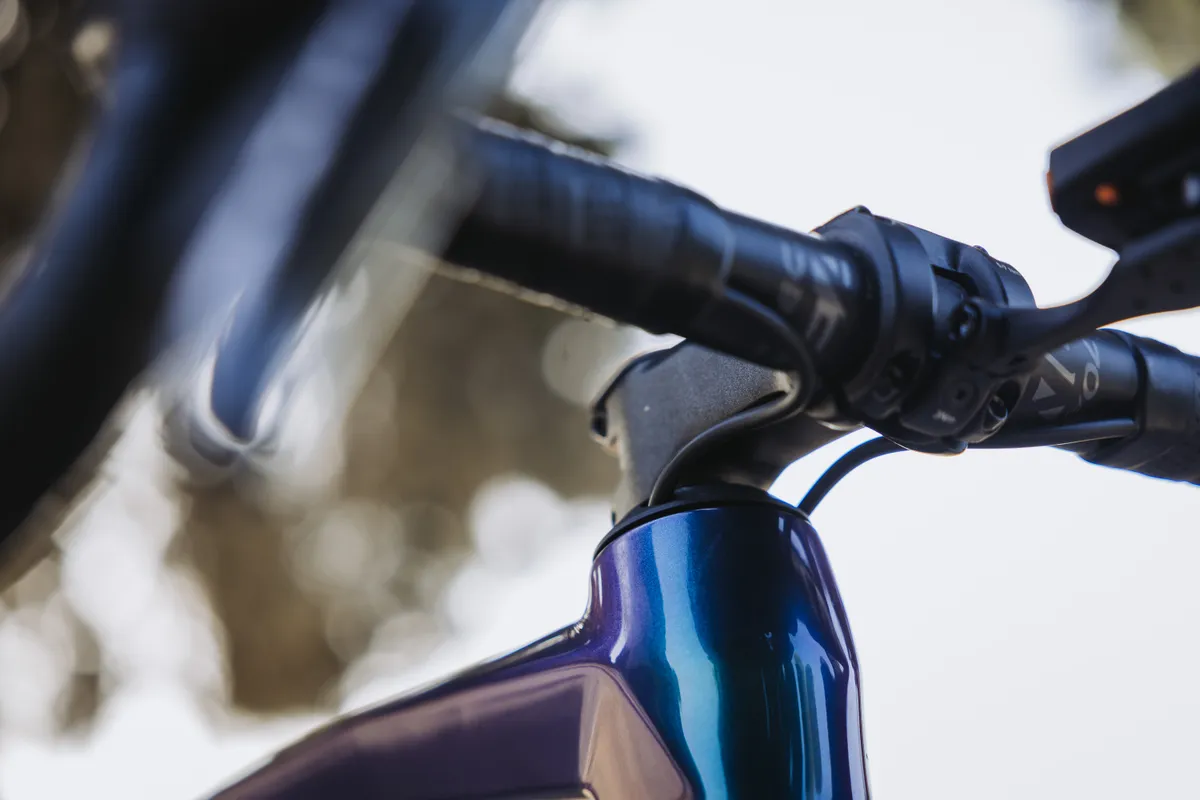
If there’s one thing you can bet on for just about any mid-to-high-end bike – be it a road bike, gravel bike, mountain bike or even a hybrid bike – it’s the move to integrated cable routing.
There’s no surprise here, then, with the Silex now featuring Merida’s Wire Port system, borrowed from the Scultura, Reacto and Scultura Endurance road bikes.

Aside from the clean looks, Merida says the lack of cables at the front of the bike makes it easier to fit an oh-so-trendy handlebar bag.
The internal routing also extends to the provision for a dynamo hub through the fork.
At the back of the bike, and as we’ve already covered, the seatpost clamp on the carbon frame is integrated, too. It uses a standard 27.2mm post, so is compatible with the latest gravel dropper posts.
Tyre clearance, gearing options and big braking power
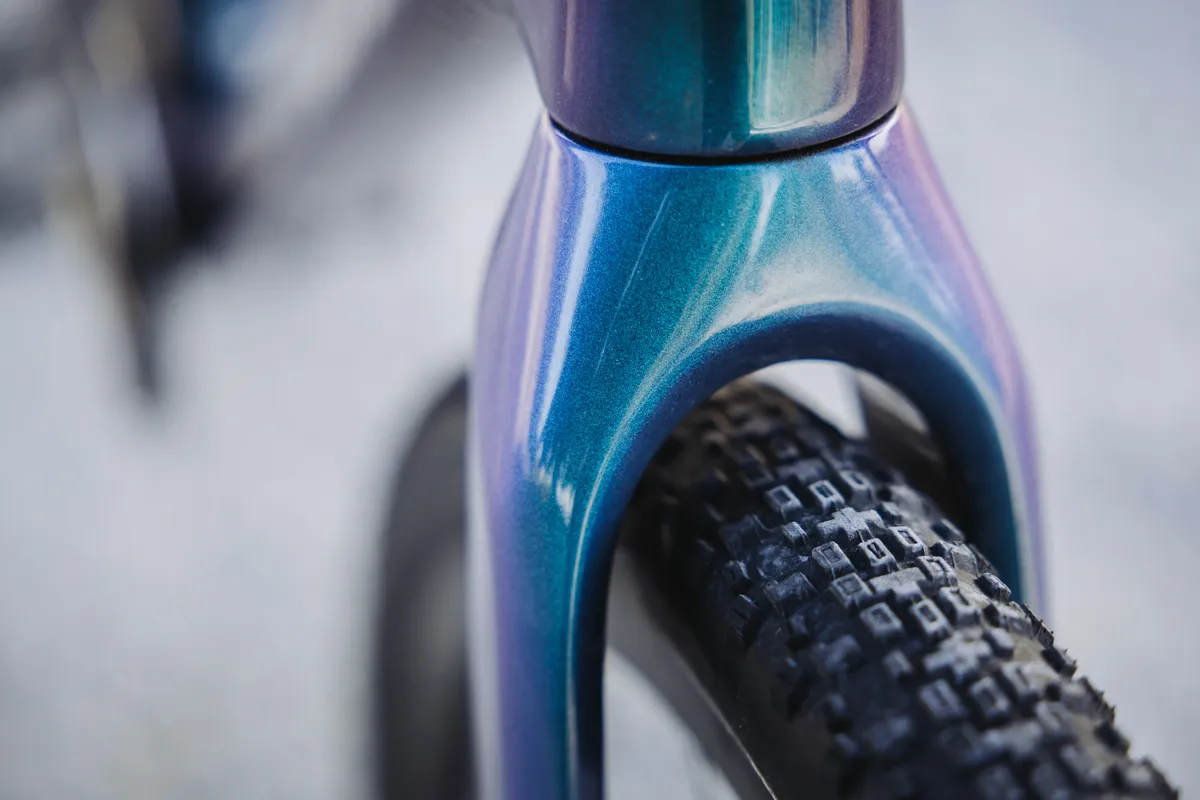
One of the key evolutions in gravel bikes over the past few years, and certainly since the launch of the original Silex, is the increase in tyre clearance.
While the 40mm tyre clearance offered by the original Silex was representative of gravel bikes of the day, times have moved on, meaning an increase to 45mm. That’s with 700c wheels – Merida describes 650b wheels as “obsolete” on gravel bikes.
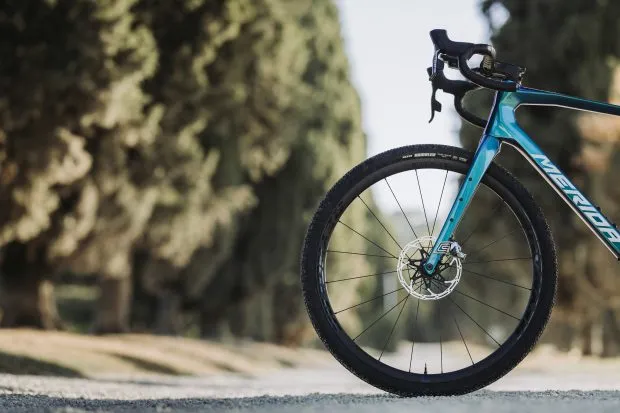
The latest endurance road bikes have started to nip at the heels of ‘old-school’ gravel bikes, with the likes of the Specialized Roubaix SL8 and new Giant Defy offering 40mm and 38mm of tyre clearance respectively.
By increasing tyre clearance to 45mm (or 42mm with mudguards/fenders), the Silex marks itself out once again as a dedicated gravel bike (the Scultura Endurance GR is more road-focused with clearance for 35mm). Still, the Silex is still fairly middle-of-the-road as far as today’s gravel bikes are concerned.

As an example, the new Canyon Grail tops out at 42mm (a conservative 2mm increase from the original Grail), but that’s apparently a conscious design by Canyon, given that bike’s racy intentions.
At the other end of the spectrum, more ‘progressive’ gravel bikes now offer clearance in the 48-50mm range and beyond.
As for gearing options, 1x and 2x drivetrains continue to duke it out for gravel supremacy, and the new Silex works with both.
If you’re using a 2x crankset, the frame is compatible with chainrings up to 50-34t (a compact road crankset, as used by Mohorič at the gravel worlds), so there’s the opportunity to go big with your gravel gearing. The maximum chainring size for 1x is 46 teeth.
The Silex’s dropped chainstay helps provide the 45mm of tyre clearance, while retaining 1x and 2x compatibility, and this flexibility was important to Merida. "Going 1x reduces weight and gives simplified controls, while a 2x setup delivers short gaps between gears for even cadence,” says Merida. “What works best is up to you.”
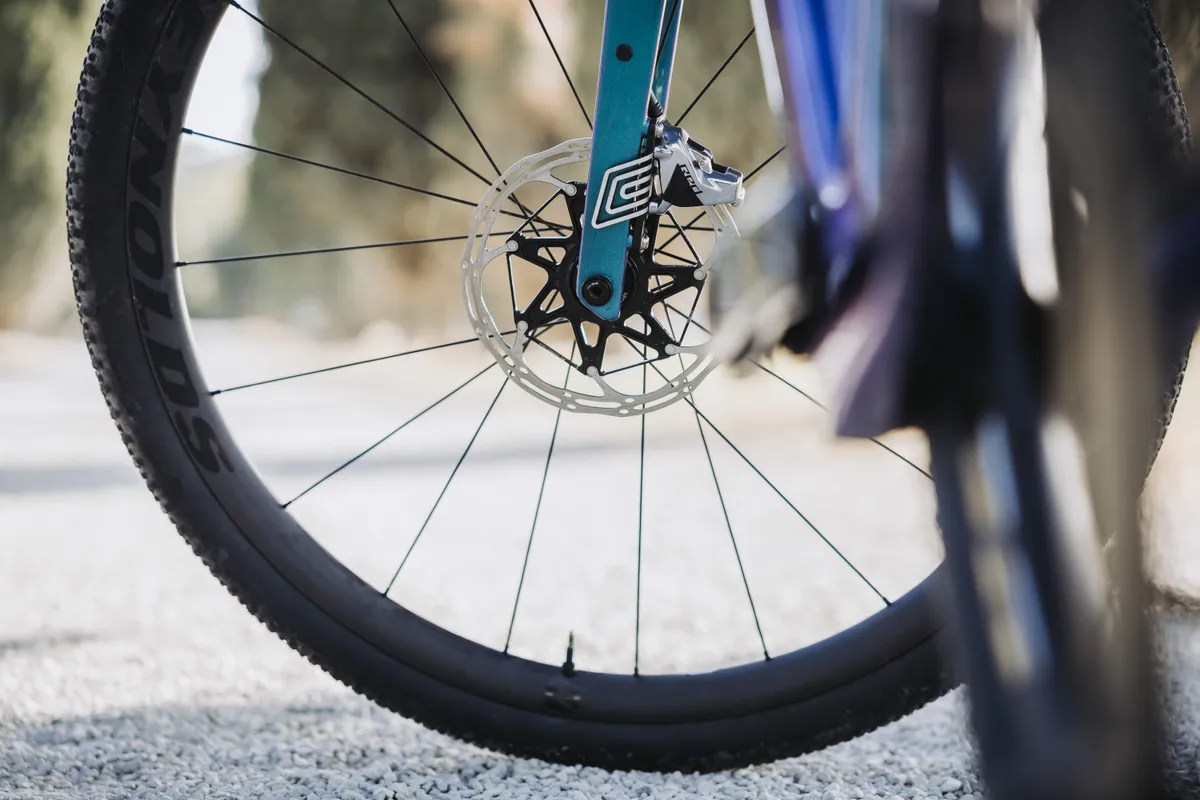
In terms of braking, all bikes in the range – in all sizes – use 180mm rotors.
Bigger disc brake rotors were near the top of the wish-list of Hannes Noller, Merida’s senior product manager, who says the weight penalty is negligible compared to the benefit of more braking power. The carbon Silex frame also uses Merida’s rotor cooling fins.
Merida Scultura Endurance GR vs Merida Silex
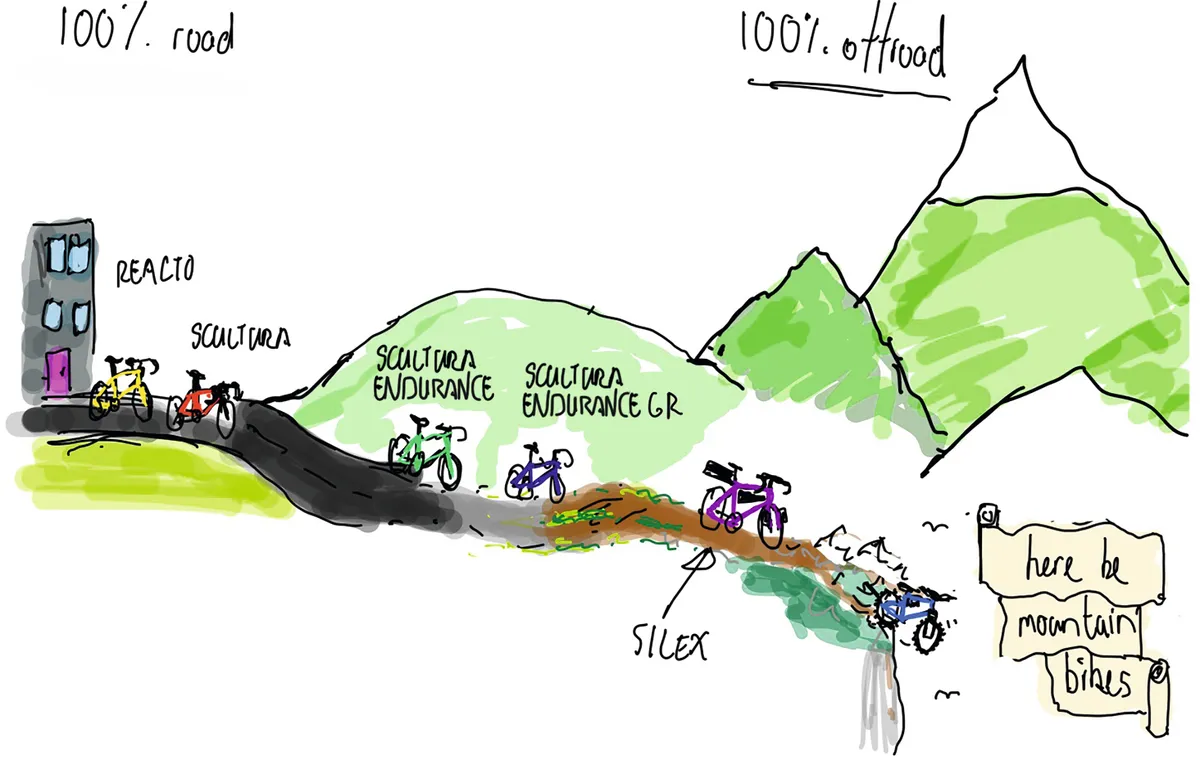
Given that the Scultura Endurance GR was only launched in July this year, it’s worth touching on where the Silex sits alongside it.
The Scultura Endurance GR is effectively an endurance road bike masquerading as a go-fast gravel race bike, with a more aggressive, road-focused geometry and narrower tyre clearance (38mm) than the refreshed Silex.
In short, Merida says the Scultura Endurance GR is part of the new wave of endurance road bikes, which, based on the recent evolution of the category, have pretty much wiped out the ‘all-road’ niche.
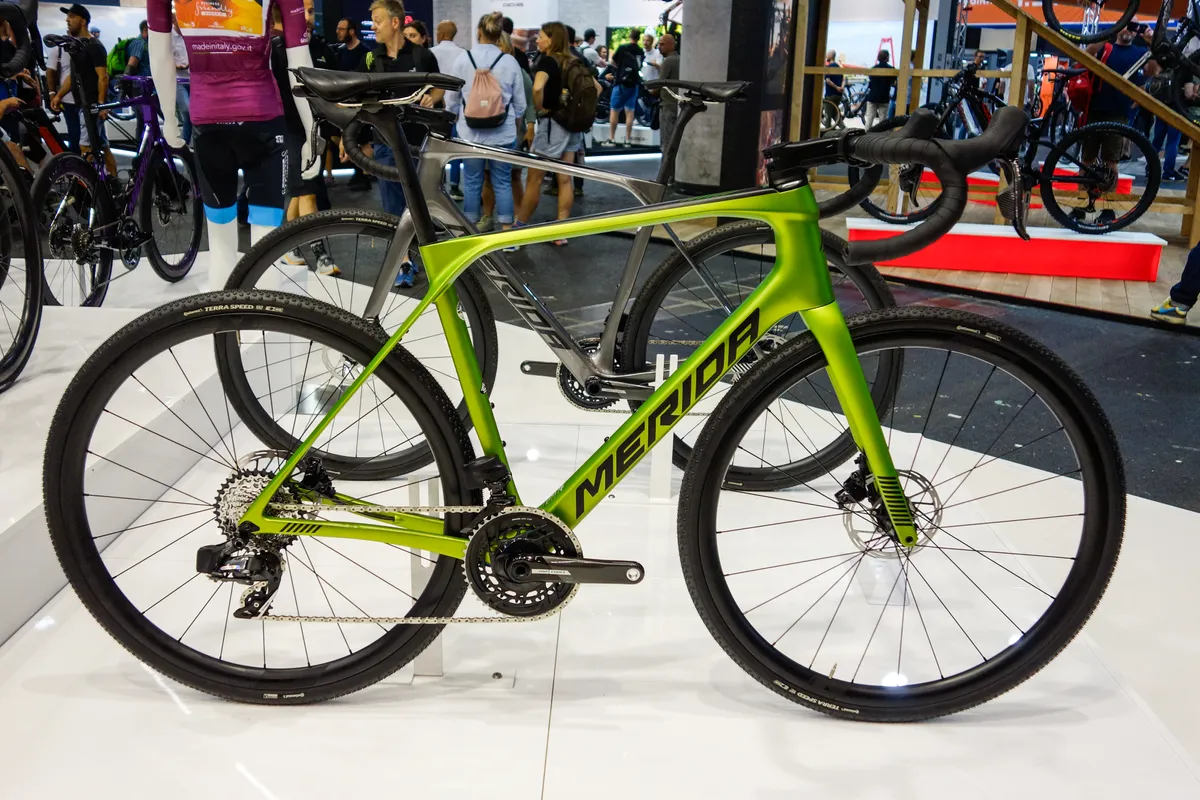
As far as Merida is concerned, the Scultura Endurance GR is for riders who think the Silex is “too slack, too long and too adventurous”.
The new Silex, meanwhile, is for “adventure riding, day-to-day gravel and ultra-distance racing… but, Mohorič in mind, it’s still good for high-level, one-day gravel racing”.
| Model | Merida Reacto | Merida Scultura | Merida Scultura Endurance | Merida Scultura Endurance GR | 'Old' Merida Silex | 'New' Merida Silex |
|---|---|---|---|---|---|---|
| Style | Aero road | All-rounder | Endurance road bike | Gravel racing | Gravel adventure | Gravel adventure |
| Road bias | 100% | 100% | 80% | 30% | 10% | 10% |
| Fire road bias | 20% | 60% | 40% | 30% | ||
| Off-road bias | 10% | 50% | 60% |
With its latest changes, Merida says the Silex’s genetic make-up is 60 per cent off-road, 30 per cent fire road (or genuine ‘gravel roads’) and 10 per cent road.
The table above provides a full overview of all of Merida's drop-bar bikes, and how the brand classifies them.
2024 Merida Silex range overview
The range covers six bikes at launch – three with an aluminium frame and three with a carbon frame – with a mix of Shimano and SRAM builds.
Merida says a seventh bike, the Silex 8000, will be launched next year, with as-yet-unreleased parts. Any guesses?
In terms of Merida’s nomenclature, a three-number model name denotes the use of an aluminium frame, and a four-number model name signifies a carbon frame.
Merida says some models will be available from the end of November. The Euro prices below are specifically for Ireland, and prices may vary in other Eurozone countries.
Merida Silex 200
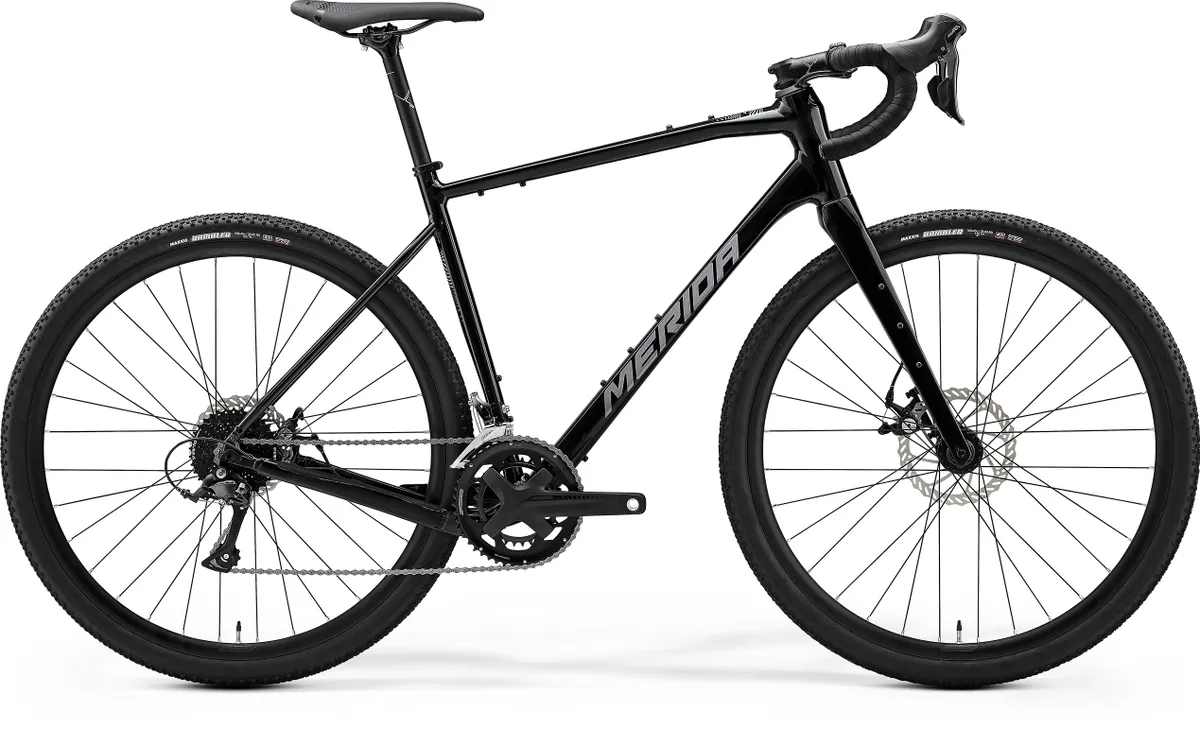
- Frame: Merida Silex Lite II
- Fork: Merida II CF2
- Groupset: Shimano Sora
- Wheels: Merida Comp SL II
- Tyres: Maxxis Rambler 700x45c
- Price: £1,275 / €1,500
Merida Silex 400
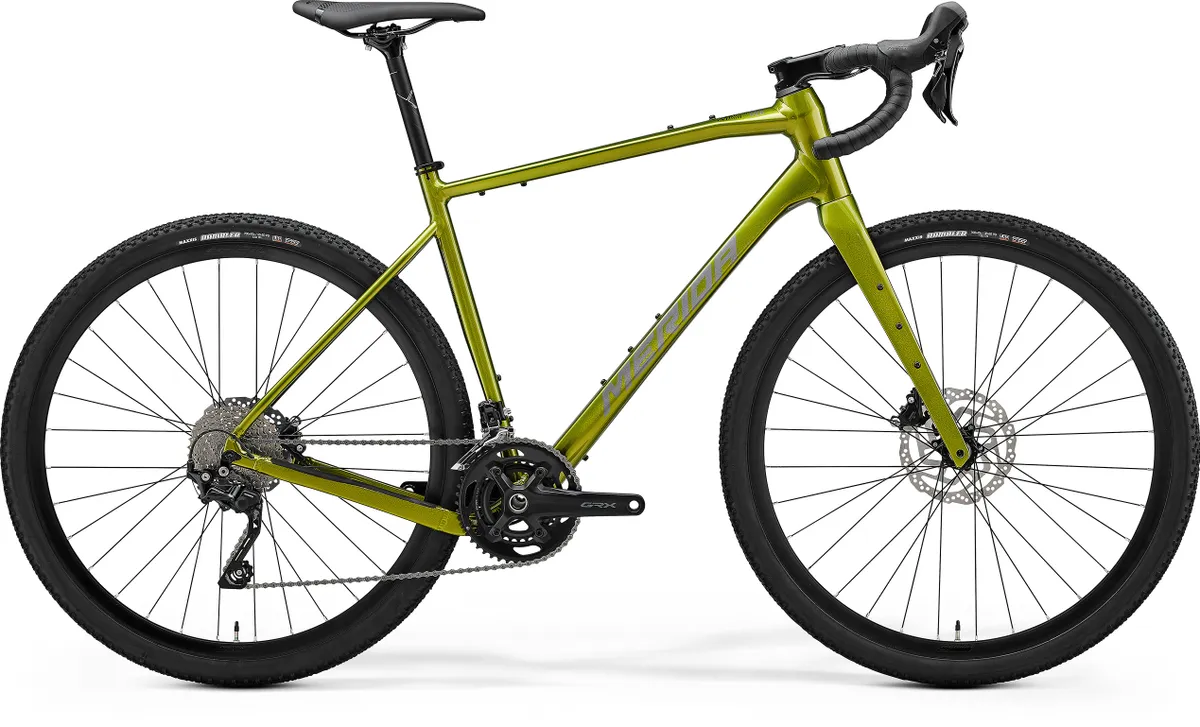
- Frame: Merida Silex Lite II
- Fork: Merida II CF2
- Groupset: Shimano GRX 400
- Wheels: Merida Expert SL II
- Tyres: Maxxis Rambler 700x45c
- Price: £1,650 / €1,980
Merida Silex 700
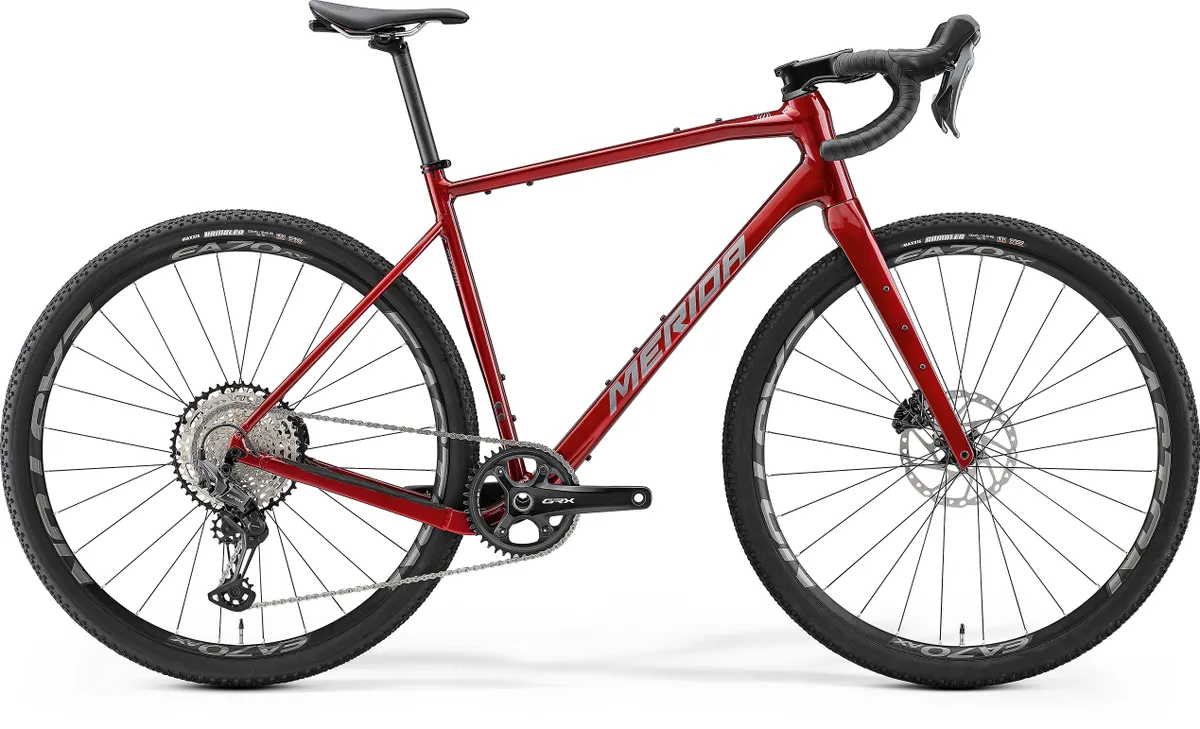
- Frame: Merida Silex Lite II
- Fork: Merida II CF2
- Groupset: Shimano GRX 820
- Wheels: Easton EA70 AX
- Tyres: Maxxis Rambler 700x45c
- Price: £2,350 / €2,820
Merida Silex 4000
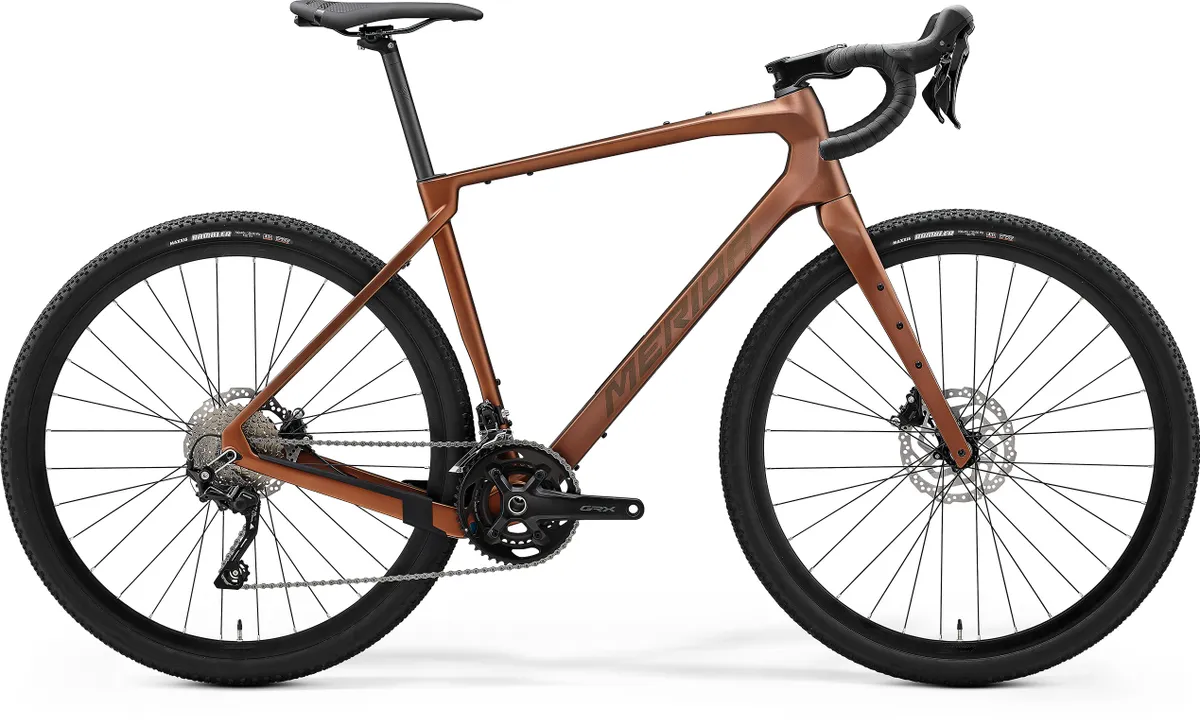
- Frame: Merida Silex CF2 II
- Fork: Merida II CF2
- Groupset: Shimano GRX 400
- Wheels: Merida Expert SL II
- Tyres: Maxxis Rambler 700x45c
- Price: £2,250 / €2,700
Merida Silex 7000
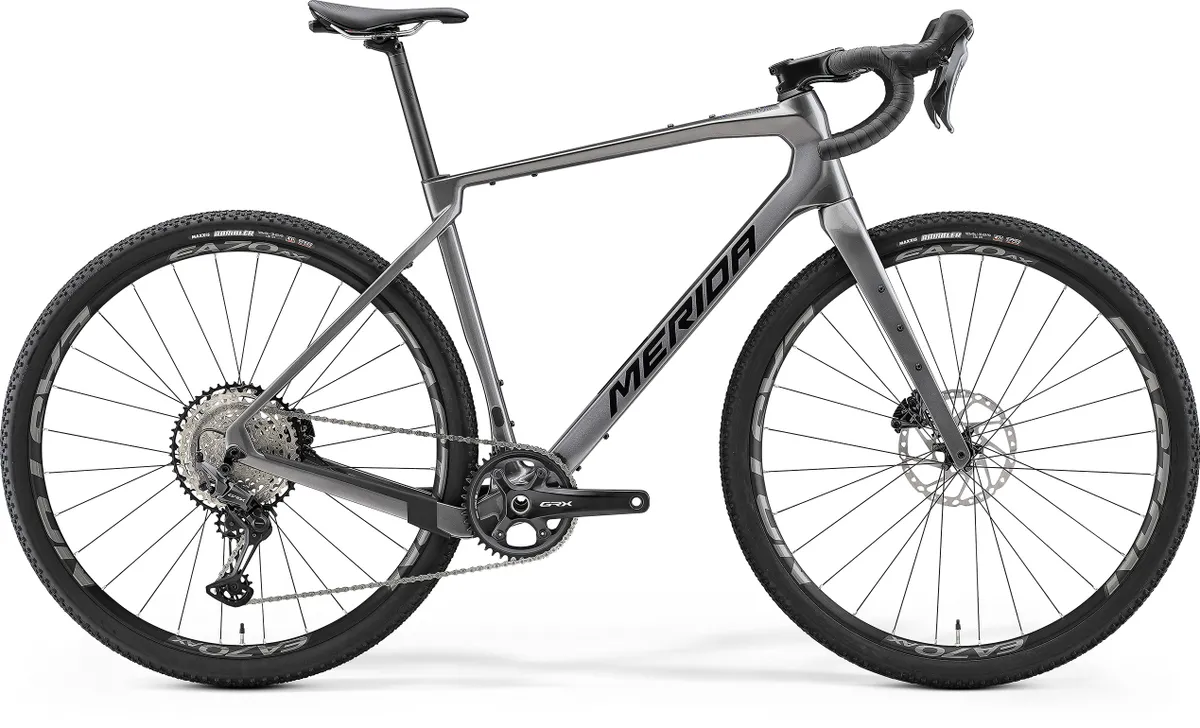
- Frame: Merida Silex CF2 II
- Fork: Merida II CF2
- Groupset: Shimano GRX 820
- Wheels: Easton EA70 AX
- Tyres: Maxxis Rambler 700x45c
- Price: £3,000 / €3,600
Merida Silex 10k
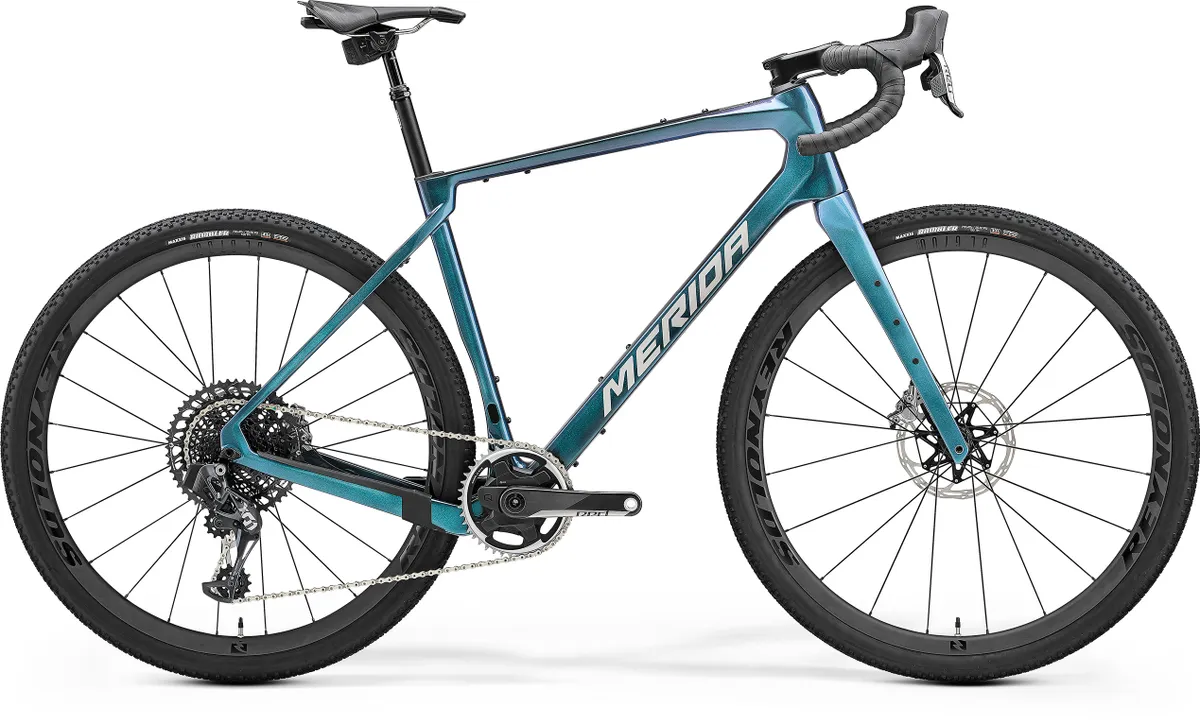
- Frame: Merida Silex CF2 II
- Fork: Merida II CF2
- Groupset: SRAM Red AXS / SRAM X01 Eagle AXS mullet
- Wheels: Reynolds Black Label G700 Pro
- Tyres: Maxxis Rambler 700x45c
- Price: £8,750 / €10,500
